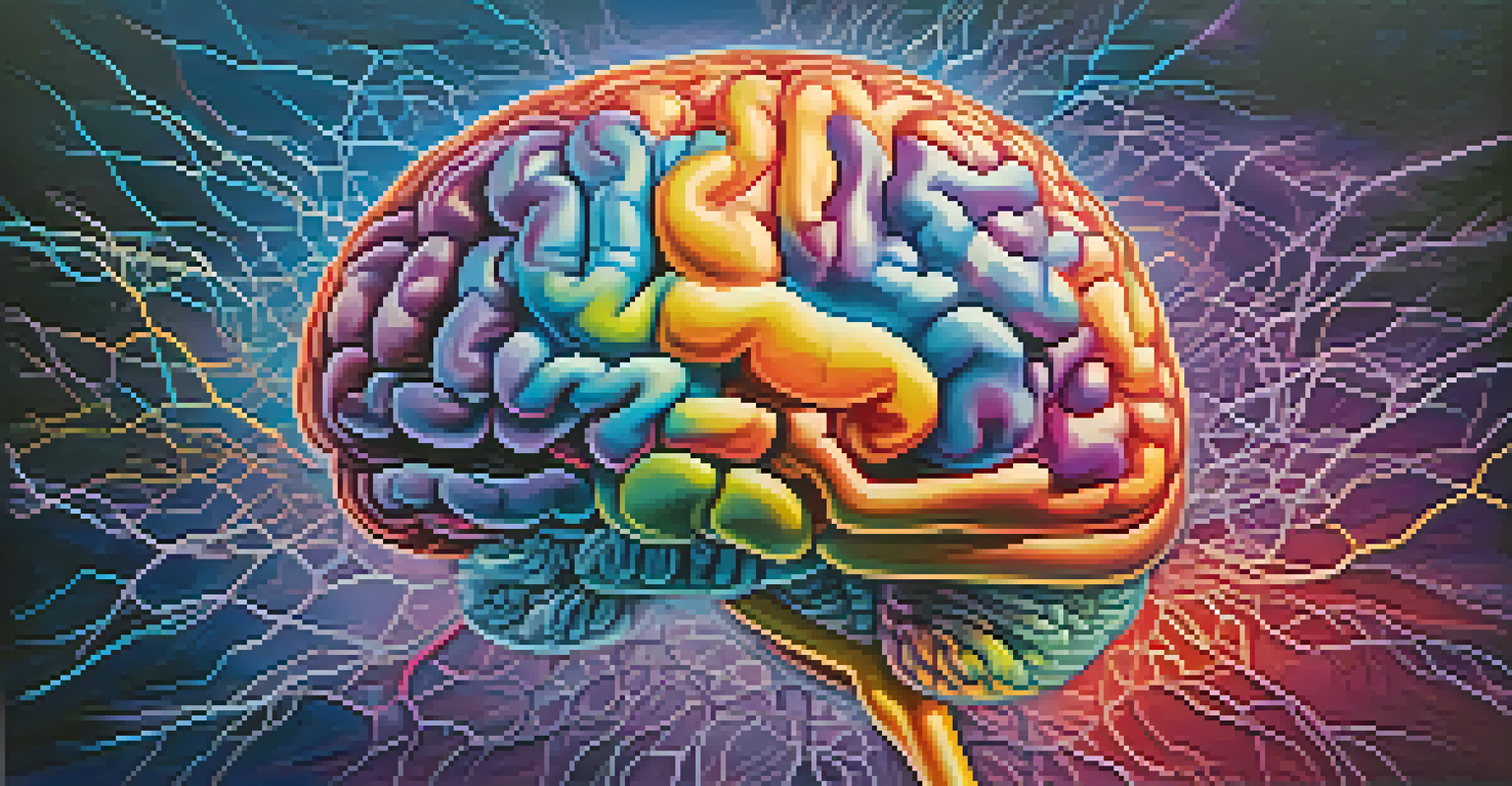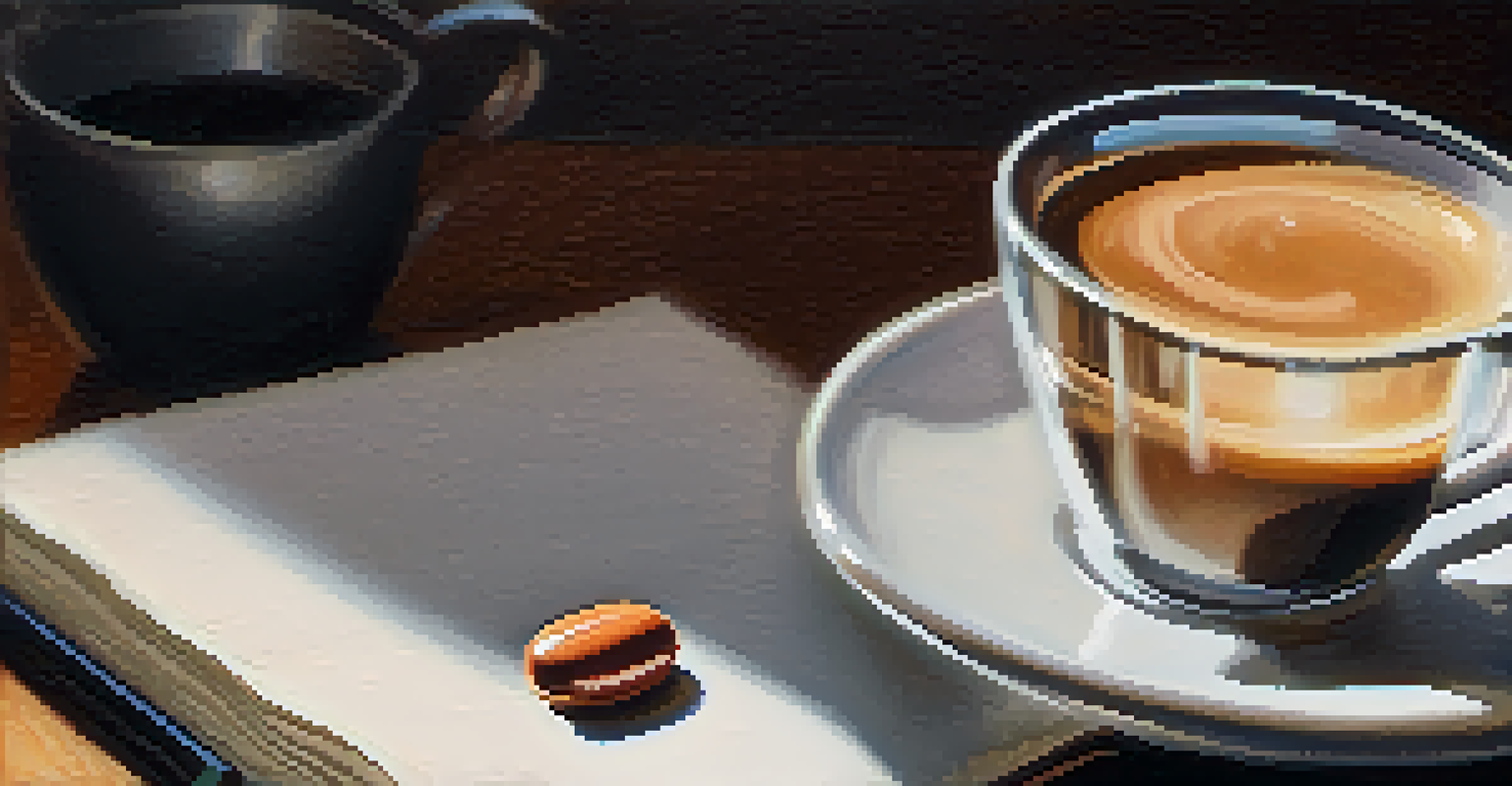The Science of Microdosing: Benefits and Risks Explained

What is Microdosing? A Brief Overview
Microdosing refers to the practice of taking small, sub-perceptual doses of psychedelic substances, such as LSD or psilocybin. Typically, these doses are around one-tenth to one-twentieth of a regular recreational dose, meaning users often don't experience the classic 'trip' associated with these drugs. Instead, the goal is to enhance cognitive functions and emotional well-being without significant alterations in perception.
Microdosing is a way of enhancing your experience, not altering it.
This trend has gained traction in recent years, especially among professionals and creatives seeking a boost in productivity, focus, or creativity. Microdosing is often touted as a way to achieve mental clarity and emotional balance, making it appealing to those in high-stress environments. However, it's essential to approach this practice with caution, as the science behind it is still evolving.
While microdosing may sound intriguing, understanding its origins and mechanisms is crucial. The concept draws from ancient practices of using psychedelics for spiritual purposes, but modern microdosing is more about self-improvement than exploration. As we delve deeper into the science, we will uncover both the potential benefits and the risks involved in this fascinating practice.
Potential Benefits of Microdosing Explained
Advocates of microdosing often report a range of benefits, from increased creativity to reduced anxiety. Many users claim that small doses can help them tap into a flow state, where ideas come more freely and problem-solving feels more intuitive. This can be particularly beneficial in creative fields, where innovation is key to success.

Moreover, some studies suggest that microdosing may have therapeutic effects, particularly for mental health conditions like depression and anxiety. By promoting neuroplasticity—the brain's ability to adapt and reorganize—microdosing may provide relief for those struggling with traditional treatment methods. However, it's important to note that more rigorous research is needed to substantiate these claims.
Understanding Microdosing Basics
Microdosing involves taking small doses of psychedelics to enhance cognitive function and emotional well-being without the typical hallucinogenic effects.
Additionally, microdosing could enhance focus and productivity, making mundane tasks feel more engaging. Users often describe a sense of heightened awareness and presence, which can lead to more effective work sessions. While these benefits sound promising, they should be approached with a balanced perspective, considering the potential downsides.
The Science Behind Microdosing: What Do We Know?
The scientific community is beginning to investigate microdosing more seriously, although much of the current knowledge is anecdotal. Research indicates that psychedelics can stimulate serotonin receptors in the brain, which may help improve mood and emotional regulation. However, the exact mechanisms of how microdosing achieves these effects are still under exploration.
The mind is everything. What you think you become.
Some studies have begun to reveal potential cognitive benefits, such as improved problem-solving abilities and enhanced creativity. For instance, a study at the University of Toronto found that participants who microdosed reported higher levels of creativity and satisfaction in their work. Yet, these findings are preliminary, and the placebo effect cannot be ruled out.
As research continues, scientists hope to uncover more definitive conclusions about microdosing's effects on cognitive function and mental health. The challenge lies in conducting controlled studies that can isolate the effects of microdosing from other variables. Until then, the excitement surrounding microdosing remains a blend of science and speculation.
Identifying the Risks of Microdosing
While the benefits of microdosing are often highlighted, it's equally important to consider the potential risks. Some users may experience negative side effects, such as anxiety, paranoia, or fatigue, even at low doses. Moreover, because these substances can affect everyone differently, what works for one person might not work for another.
Another concern is the legality of microdosing substances. Many psychedelics are classified as illegal drugs in numerous countries, which poses legal risks for users. Engaging in microdosing without understanding the legal implications can lead to serious consequences, including fines or incarceration.
Weighing Benefits Against Risks
While microdosing may boost creativity and reduce anxiety, it also carries risks like anxiety, legality issues, and variable substance purity.
Additionally, the lack of regulation in the production of psychedelics means that the purity and dosage of substances can vary significantly. This inconsistency can lead to unforeseen negative experiences, making it crucial to source substances responsibly and be aware of their origins. Understanding these risks is vital for anyone considering microdosing.
Microdosing and Mental Health: A Double-Edged Sword?
The relationship between microdosing and mental health is complex. While some users report significant improvements in mood and reduction in anxiety, others may find that the practice exacerbates underlying mental health conditions. It's essential to approach microdosing as a potential complement to existing therapies rather than a standalone solution.
For individuals with a history of mental health issues, microdosing without professional guidance can be risky. The effects of psychedelics can vary greatly, and in some cases, they may trigger unwanted psychological responses. Therefore, consulting with a mental health professional before embarking on a microdosing journey is a prudent step.
Furthermore, ongoing research aims to clarify how microdosing could be integrated into mental health treatment plans. As scientists delve deeper into the therapeutic potential of psychedelics, they hope to develop safe protocols for usage that could benefit those in need. Until then, it's vital to tread cautiously, recognizing both the potential benefits and the risks involved.
How to Microdose Safely: Best Practices
If you're considering microdosing, adopting safe practices is crucial for minimizing risks. Start by educating yourself about the substance you plan to use, including its effects and potential side effects. Conduct thorough research and consider joining online communities where experienced users can share their insights and advice.
Begin with the lowest possible dose, allowing your body to adjust and observe how you respond. Keeping a journal to document your experiences can help track effects and identify patterns, making it easier to find the right dosage for you. This mindful approach can enhance your experience and help mitigate unwanted side effects.
Future Research and Trends
Ongoing studies aim to clarify the effects of microdosing, potentially transforming its role in mental health treatment and wellness practices.
Lastly, remember that microdosing should not be a substitute for professional medical advice or treatment. If you have existing mental health concerns or are on medication, consulting a healthcare provider is essential. A thoughtful, informed approach to microdosing can lead to a beneficial experience while keeping safety at the forefront.
The Future of Microdosing: Trends and Research
As interest in microdosing continues to grow, researchers are increasingly focused on studying its effects in controlled environments. New studies are being initiated to explore its benefits, risks, and long-term implications. This increasing research could lead to a better understanding of how microdosing can be effectively integrated into wellness practices.
Moreover, as societal attitudes toward psychedelics shift, there is a potential for more open discussions about their use for therapeutic purposes. This could pave the way for regulatory changes, allowing for legal microdosing practices under professional supervision. Such developments could transform the landscape of mental health treatment and self-improvement.

In summary, while the future of microdosing holds promise, it also demands careful consideration and ongoing research. As we learn more about its effects, we can better understand how to harness its potential safely. Ultimately, the journey of microdosing is not just about the substances themselves, but about fostering a deeper awareness of our mental and emotional well-being.